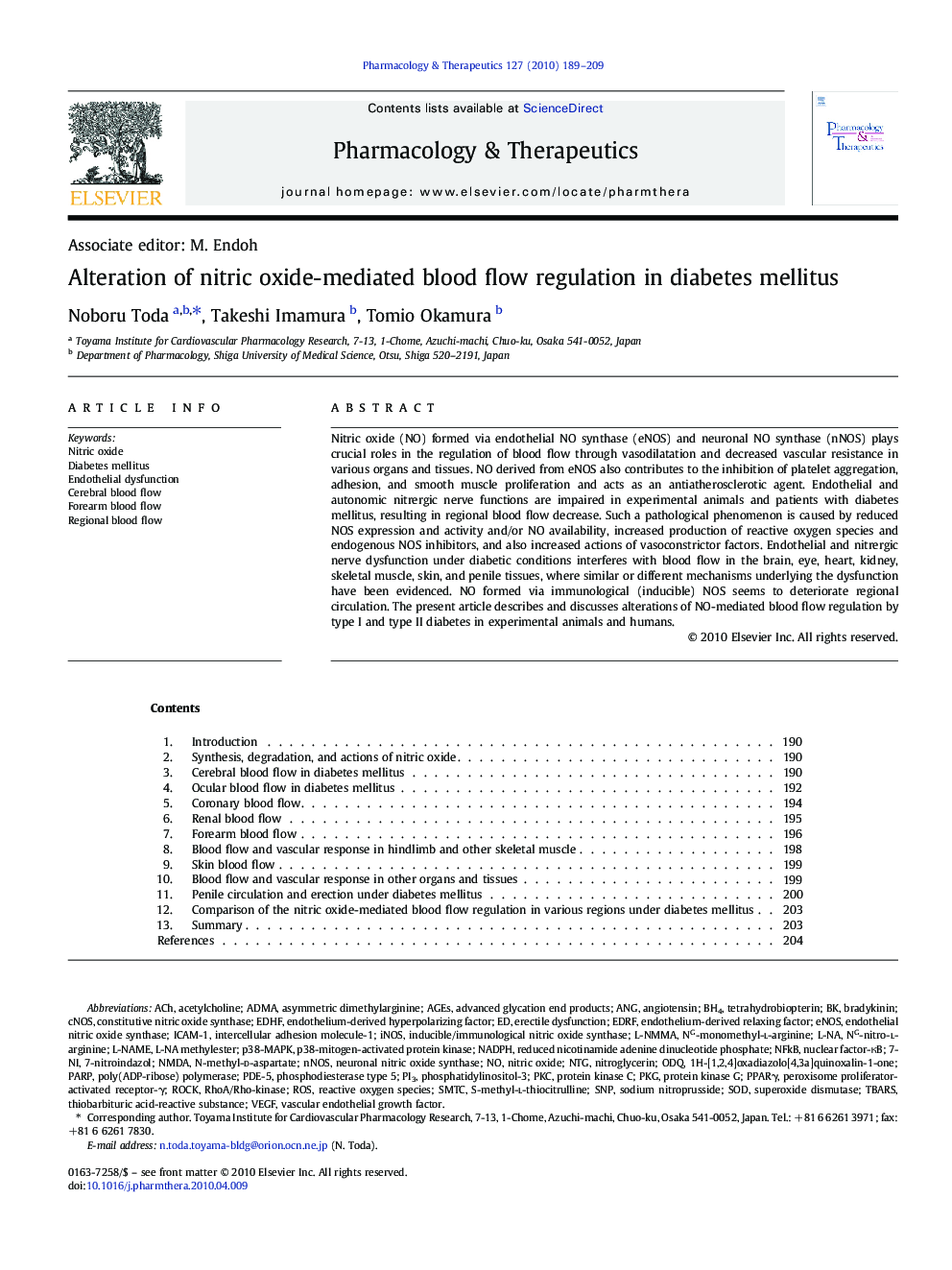| Article ID | Journal | Published Year | Pages | File Type |
|---|---|---|---|---|
| 2563473 | Pharmacology & Therapeutics | 2010 | 21 Pages |
Nitric oxide (NO) formed via endothelial NO synthase (eNOS) and neuronal NO synthase (nNOS) plays crucial roles in the regulation of blood flow through vasodilatation and decreased vascular resistance in various organs and tissues. NO derived from eNOS also contributes to the inhibition of platelet aggregation, adhesion, and smooth muscle proliferation and acts as an antiatherosclerotic agent. Endothelial and autonomic nitrergic nerve functions are impaired in experimental animals and patients with diabetes mellitus, resulting in regional blood flow decrease. Such a pathological phenomenon is caused by reduced NOS expression and activity and/or NO availability, increased production of reactive oxygen species and endogenous NOS inhibitors, and also increased actions of vasoconstrictor factors. Endothelial and nitrergic nerve dysfunction under diabetic conditions interferes with blood flow in the brain, eye, heart, kidney, skeletal muscle, skin, and penile tissues, where similar or different mechanisms underlying the dysfunction have been evidenced. NO formed via immunological (inducible) NOS seems to deteriorate regional circulation. The present article describes and discusses alterations of NO-mediated blood flow regulation by type I and type II diabetes in experimental animals and humans.
